
| Commissions |
| Artists' Studios |
| Spotlight |
| Guest Curators |
| Events |
| lovid | slocum | arikan | jason freeman | donaldson/haque/hasegawa/tremmel | freeman | kildall/scott |
| magruder/baker/steele| proske | masaoka | pappenheimer/jansen | avair2 | hudak | ajaykumar | kim |
| howe/karpinska | layton | van veen | christensen | moore | plork | nash | pitaru | belanger/riley/voisey |
| christensen | heilman | networked | bernett/ioveva | ham/rosenbaum | petit | lachman | hovagimyan |
by LoVid
with funds from the New York State Music Fund, established by the New York State Attorney General at Rockefeller Philanthropy Advisors
More of the Same extends LoVid's investigation of electrical irregularities and human interactions. After it loads copies of a single sound sample, fissures in the digital veneer are explored as the spoken communication is played back repeatedly. Though each instantiation of the speech is identical, physical constraints affect the timing. This allows the nature of the medium to peek through the cracks in the voices. [Needs: start slowly with 1; close each popup window before launching the next]

by Paul Slocum
with funds from the New York State Music Fund, established by the New York State Attorney General at Rockefeller Philanthropy Advisors
You're Not My Father is composed of a sequence of recreations of a 10 second scene from the television show Full House, overlaid with sound loops from the scene's original music. The crews who re-shot the scene were recruited through Internet message boards and Craigslist; each was paid $150. Instructions for shooting the scene and delivering the footage were issued to the crews. To-date, the project includes participants from Austin, Cincinnati, Chicago, Dallas, Denton, London, and San Francisco. Although the commission money has been exhausted, Slocum is still accepting submissions. If you are interested in participating, read the PDF document on the website. Your footage will be added to the video sequence online and exhibited in future gallery exhibitions. You're Not My Father is included in Slocum's solo show More House which opens January 11, 2008 at Dunn and Brown Contemporary, 5020 Tracy Street, Dallas, Texas. [Needs Quicktime plugin]
Read an Interview >>
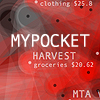
by Burak Arikan
with funds from the Jerome Foundation
MYPOCKET discloses the artist's personal financial records to the world by exploring and revealing essential patterns in the daily transactions of his bank account. These are the records that we usually keep secret, whereas financial institutions intensively analyze them to score our credibility. Archived on the site, the artist's two years of spending history is analyzed by the custom software to predict future spending; these predictions sometimes determine his future choices, creating a system in which both the software and the artist adapt to one another. Influenced by today's techno-cultural milieu, MYPOCKET presents a hybrid interface to a living physical/digital process. [Needs a Java and Flash enabled browser; best on Firefox or Safari; optional RSS reader for Transaction Feed]
Read a 1/Review >> [Turkish]
Read a 2/Review >>
Read an Interview >>
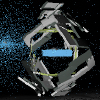
by Jason Freeman, with Andrew Beck, Xiang Cao, Mark Godfrey, Jagadeeswaran Jayaprakash, Al Matthews, Rachel Ponder, Alex Rae, and Sriram Viswanathan
with funds from the New York State Music Fund, established by the New York State Attorney General at Rockefeller Philanthropy Advisors
Flou (pronounced "flew") is not exactly a game; you do fly a ship through space, but you cannot shoot anything, score points, or win or lose. The focus, rather, is on the soundtrack: as you navigate through a 3D world and zoom through objects in space, you add loops and apply effects to an ever-evolving musical mix. You can also design your own worlds to fly through and share them with other Flou users. [Needs Java 1.5+; Windows XP or Vista, Mac OS X, or Linux; Minimum 768 MB RAM and 1.5 GHz processor; Fast graphics card; Speakers or headphones]
Read a Review >>

by Neill Donaldson, Usman Haque, Ai Hasegawa, Georg Tremmel
with funds from the Andy Warhol Foundation for the Visual Arts
Remote connects together two spaces, one in Boston the other in Second Life, and treats them as a single contiguous environment, bound together by the Internet so that things that occur in one space affect things that happen in the other and vice versa — remotely controlling each other. Communication between the two halves of this extended environment is a complex choreography coupling the environmental phenomena of humidity, temperature, light, speech, mist, wind, sound and proximity across the two. The object in Boston appears to be a seat; but, experientially, the Second Life space appears to be inside the seat. A similar alteration of scale occurs in the other direction. Visitors to the Boston space and the Second Life space must negotiate to achieve goals: e.g. by sitting down, breathing, touching, knocking, colliding. The environmental data of both spaces is publicly available in realtime via the EnvironmentXML repository enabling others to build devices and spaces that connect directly to both Boston and Second Life. The intention is to explore an architecture that is resolutely "human" (in the sense of being inhabited, configured and determined by its occupants) yet context-free (because it does not privilege geographical location).
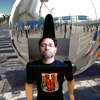
by John (Craig) Freeman
with funds from the Andy Warhol Foundation for the Visual Arts
Imaging Beijing is the latest installment of Imaging Place, a place-based, virtual reality project that combines panoramic photography, digital video, and virtual worlds to investigate and document situations where the forces of globalization are impacting the lives of individuals in local communities. When a denizen of Second Life first arrives at Imaging Beijing, he, she or it can walk over a satellite image of central Beijing where they will find a networks of nodes constructed of primitive spherical geometry with panoramic photographs texture mapped to the interior. The avatar can walk to the center of one of these nodes and use a first person perspective to view the image, giving the user the sensation of being immersed in the location. A web-cam captures live video of the user and transmits it to the head of an exhibition avatar. Dated links in the virtual space launch a browser, which opens a web journal of the Imaging Beijing field research. [Needs Quicktime plugin]
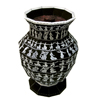
by Scott Kildall and Victoria Scott
with funds from the Andy Warhol Foundation for the Visual Arts
NO MATTER is an interactive installation that activates the transformation of imaginary objects through the Second Life virtual economy into physical space. Second Life builders construct replicas of famous buildings, luxury goods and custom-designed objects, first reproducing, then inverting the notion of value itself. With zero cost for gathering resources, production of goods and transport of finished product, these items proliferate widely and quickly. In the real world, consumer items and imaginary objects serve as forms of emotional attachment — projection screens for desire, fear and love. A 3D-simulated space, combined with a virtual currency and social interaction, Second Life is a fully functioning economy of the immaterial.
Read a review >>
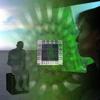
by Michael Takeo Magruder, Drew Baker and David Steele
with funds from the Andy Warhol Foundation for the Visual Arts
In the 1st century BC, Roman writer, architect and engineer Vitruvius codified specific building formulae based on the guiding principles of strength, utility and beauty. He believed that architecture was intrinsically linked to nature and was a human imitation of cosmic order. The most well-known interpretation of this postulate is the Vitruvian Man by Leonardo da Vinci in which the male form is depicted in unity with the square and circle - representing material and spiritual existence respectively. The Vitruvian World is a multi-nodal and recursive artwork that embodies the principles of Vitruvius within this context. Existing in three distinct yet interconnected spaces, the work simultaneously embraces the virtual, the physical, and the network connecting them.
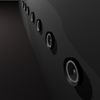
by Pierre Proske, with technical assistance from Artem Baguinski and Brigit Lichtenegger
with funds from the Andy Warhol Foundation for the Visual Arts
When someone screams in real life, do they hear us in virtual reality? Do they want to? CATERWAUL is an interactive sound installation that operates as a one way “portal” to Second Life via the internet. A physical wall in Boston operates as a totemic locus of grief. People approach it with intent to wail and mourn. The mourners grieve their lost loved ones who spend more time in virtual and on-line worlds than they do communicating in real life. The cacophony of the lamentation is recorded by hidden microphones in the wall, transmitted across the Internet and piped out of an "identical" wall in the virtual world Second Life. A website displaying a simulation of the wall allows other people, on the threshold of "real" and "second" life, to vicariously eavesdrop the wailing.

by Miya Masaoka
with funds from the New York State Music Fund, established by the New York State Attorney General at Rockefeller Philanthropy Advisors
Air Detritus is derived from sounds that were collected from the air and water detritus of Central Park, New York. Sounds were collected via a 2-way radio submerged in a pond, and on land. The act of recycling materials into a new piece, and re-using objects and sound fragments seems a way to re-imagine the world, a symbolic treatment that enacts the idea of sustainability as an elusive but critical goal of consuming fewer materials. As a consumer working with digital tools, I have accumulated many old monitors, hard drives, cords, and interfaces that are quickly obsolete. The molded plastic and metal have a perverse dialectical relationship to the data of ones and zeros that are transported and stored. This piece is a moment of reflection upon these relationships, and our relationship to the world. - Miya Masaoka [Needs mp3 or Real Audio Player, speakers on]
by Will Pappenheimer and Chipp Jansen
with funds from the Jerome Foundation
Invisible Influenced is a Rorschach test for envisioning the US as the recipient rather than the cause of worldwide events. Contrary to the notion of impervious superpower, the artwork projects the emerging perception that the country is vulnerable to foreign conditions of climate, public opinion, economics and a variety of social institutions. Shape reads, in this case, as the confluence of intercontinental subconscious activity, which is in the process of becoming visible. Users select from foreign sources of news, weather conditions, health conditions, stock indexes, and blogs. Informational sources are chosen for their seeming distance from the US daily experience. Qualitative and quantitative indices found in global internet texts and databases are translated into up to four directional vector magnitude forces surrounding the continent. The US map silhouette then responds and distorts according to elastic physics properties programmed to its perimeter. The test mode allows the forces to act for a limited period of time; the drift mode allows the map to continue to transform until the program is reset. [Needs Flash plugin]
Read a review >>
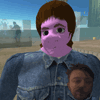
by Micheál O'Connell
with funds from the Jerome Foundation
Feed Lack Loop arose out of experiments with the idea of Feedback. Using a live performer and an Avatar in the Online World Second Life, Micheál O'Connell inquires whether the concept of interactivity, so lauded in contemporary culture, is about Empowerment or possibly leads to its opposite: Control. Also the liveliness, or lack of it, in virtual space is brought into question. The event will be situated in two spaces simultaneously, Ars Virtua Gallery in Second Life and as a live projection and performance at Lighthouse. Other relevant pieces by the same artist may be incorporated or displayed.
Live Performance: March 6, 2008; 11:30 am PST
Teleport to Ars Virtua in Second Life.
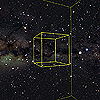
by John Hudak, with Flash programming by erational.org
with funds from the New York State Music Fund, established by the New York State Attorney General at Rockefeller Philanthropy Advisors
"My mother-in-law passed away recently, reminding me of a technique that a parapsychologist named Dr. Konstantin Raudive (1906-1974) used to record what he purported to be voices of deceased spirits. With the amount of information moving around on the Internet these days, and the passing of my mother-in-law, who I thought would want to get in touch (if possible), I thought I'd give Raudive's technique a try within the digital realm." - John Hudak [Needs Flash Player and speakers on]
Read a review >>
Curated and Engendered by Ajaykumar
with funds from the National Endowment for the Arts
iPak - 10,000 songs, 10,000 images, 10,000 abuses (iPak) is a playful, inter-active and participatory art work, that integrates your creativity, the random generation of works by a computer, and art engendered by Ajaykumar. iPak synthesises conceptual innovation, social engagement and therapeutic process: generative art as re-generative force; art-making as a medicine; inspiration emerging from tragedy; and the notion that social factors — such as marginalisation and racism — cause mental illness. Ajaykumar has created the foundation for a ‘polyphonic' narrative, one created by many stories ... yours essentially. You can upload still images, movies, texts, music, sounds, and ideas, to create a dynamic, evolving, relational entity in cyberspace. iPak fully comes into ‘being' through your participation.
by Haeyoung Kim (a.k.a Bubblyfish)
with funds from the New York State Music Fund, established by the New York State Attorney General at Rockefeller Philanthropy Advisors
I Can't Go On, I'll Go On is an interactive art piece inspired by Samuel Beckett's short novel, "Molloy." The work is presented in two parts: a blog for you to contribute your thoughts about Beckett's writing; and the multimedia generated by your entries. "In 2007 I began to learn to ride a bicycle. This for me was a choice not so much determined by reasons of pleasure but as a way of manifesting my need to literally move on with my life. Around the same time, I began to read Beckett's famous Three Novels, and was moved in particular by "Molloy." Bicycles are a very important metaphor in this book." Haeyoung Kim [Needs Flash player and speakers on]
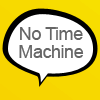
by Daniel C. Howe and Aya Karpinska
with funds from the Jerome Foundation
Quiet time, dead time, free time — call it what you will, there seems to be less and less of it. What do people give up in the race to maximize every second of their waking life? What kinds of activities are replaced by the panicked drive for efficiency? No Time Machine explores these questions by mining the Internet for mentions of the phrase I don't have time for and variations such as You can't find the time for and We don't make time for. Based on a set of procedures they've set up, a program analyzes the search results and reconstructs them into a poetic conversation. Interwoven with this "found poetry" generated by the program are sentences that they re-contextualized themselves; a human-computer collaboration that expands the field of creative writing to include networked and programmable media. [Needs a Java-Enabled Browser]
Watch video of a performance on YouTube.
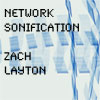
by Zach Layton
with funds from the New York State Music Fund, established by the New York State Attorney General at Rockefeller Philanthropy Advisors
In Network Sonification, a program written in java crawls across the Internet, grabbing as many related URLs as possible and analyzing their contents. Using Max/MSP, the data coming from the webcrawler program is translated into sound. The frequency and range of words, images and links on these pages create a kind of aural snapshot, giving each page a unique sonic character that is written in real time. Layton offers us a range of sonic portraits, from Boing Boing to the New York Times, enabling us to experience them as networked sonic entities rather than discrete visual/semantic pages. [Needs Quicktime Player]
![['til death do us a part] Logo](../n_m_r/commissions/van_veen/logo_100.jpg)
by Tobias c. van Veen (aka saibotuk)
with funds from the New York State Music Fund, established by the New York State Attorney General at Rockefeller Philanthropy Advisors
Experiments in Electronic Voice Phenomena (EVP) using two reel-to-reel machines in an attempt after Konstantin Raudive & William Burroughs to establish contact with the dead. In the 21C electromagnetic tape is an anachronism. Dead media unwinds time from its spools. The dead are no longer human; and when the inhuman expire, do the inhuman become more human than human, at the moment of death? Two electromagnetic machines capture the unfolding of an era in which memory encodes the loving caress of electron imprinted tape. Two tape machines in tandem share their memories, silent at first but slowly amplified through continuous re-recording & simultaneous playback. Time out of joint falls in & out of tape sync; more inhuman than human loops the frequency.
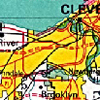
by Julia Christensen
with funds from the New York State Music Fund, established by the New York State Attorney General at Rockefeller Philanthropy Advisors
Rust Belt/Bayou is an aural exploration of two cities: Cleveland, Ohio, and New Orleans, Louisiana. For the past several years, Christensen's artistic practice has been based in extensive travel throughout the United States, surveying the ways in which communities are changing in the shadow of corporate real estate development. During these travels, she has often been struck by the similarities between Cleveland, a city of the Rust Belt, and New Orleans, a city of the bayou. Both cities dwell on the shores of bodies of water with global reach: Cleveland on Lake Erie, New Orleans on the Mississippi River. Both cities have seen the boom and bust of industry and population throughout their histories — past and present. Cleveland and New Orleans look remarkably different, but Christensen has often noticed that they have sounds in common: industry, birds, water, tourists. Rust Belt / Bayou offers an interactive document of aural snapshots from recent trips to both New Orleans and Cleveland. [Needs Flash Player and audio]
by the Princeton Laptop Orchestra (PLOrk)
with funds from the New York State Music Fund, established by the New York State Attorney General at Rockefeller Philanthropy Advisors
The Telephone Game: Oil/Water/Ether is an exploration of a real-time collaborative composition local network. All of the performers have identical performance / composition programs — a custom flexible step-sequencer — that invite play with rhythmic cycles of various lengths and timbres. The real fun starts, however, when the players begin spying on their neighbors, secretly, via the network, and stealing their ideas with the click of the mouse. Unplanned structures begin to emerge, like oil on water, as riffs propagate and evolve, sometimes returning unrecognizable to their creators.
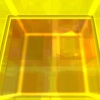
by Adam Nash (aka Adam Ramona)
with funds from the New York State Music Fund, established by the New York State Attorney General at Rockefeller Philanthropy Advisors
Trace Aureity is an interactive, immersive, audiovisual sculpture located in the 3-D synthetic world Second Life. There are eighty-eight manipulated field recordings — from city streets, birdsong, to talkback radio — and ninety-six nested rotating objects densely arranged in a three dimensional grid. Avatars, either solo or in groups, generate sounds by moving through the installation. Some of the innermost nested objects, colored red, also spawn glowing spheres which fly out and bounce around inside the work, triggering sounds as they pass through other objects. Because the playable space is so dense, players are rewarded by slowing down their movements as much as possible, since even miniscule movements create differences in sonic output. The contingencies of time-based interaction by people-as-avatars creates a dynamic audiovisual composition, always unique to that moment and those interactors. This may be seen to represent an evolution of the aleatoric composition techniques of John Cage and Brian Eno, as well as an enactment of the objets sonore of Pierre Schaeffer. [Needs Second Life account and client (free)]
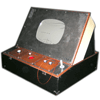
by Amit Pitaru
with funds from the New York State Music Fund, established by the New York State Attorney General at Rockefeller Philanthropy Advisors
Storm King was composed and performed with "The Sonic Wire Sculptor," originally a personal instrument created by Pitaru to compose, record and perform music. Pitaru later transformed the software into a public installation to allow a wider range of users to intuitively interact with the instrument. Gallery visitors would enter a dark room with a surround-sound system, a projection and a unique drawing station. Participants were encouraged to add their work to a steadily growing collection of beautiful and surprising sonic-sculptures. Today, this collection includes work from professional illustrators, poets, 9 year-olds and their parents, and musicians of various genres.
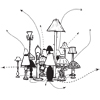
by Matthew Belanger, Sean Riley, and Ven Voisey
with funds from the Andy Warhol Foundation for the Visual Arts, the LEF Foundation, and the Massachusetts Cultural Council
Lumens is an installation of lamps networked across three spaces: Greylock Arts (Adams, MA), MCLA Gallery51 (North Adams, MA), and Turbulence.org. Scores of lamps have been borrowed from the residents of Adams and North Adams to fill the two gallery spaces. Their images and stories are represented on Turbulence.org, which also serves to connect the two locations telematically. The lamps — which have been outfitted with proximity sensors and arduino microcontrollers — light up in response to a visitor's presence and simultaneously illuminate lamps in the counterpart spaces. Thus, an individual in Adams can communicate his/her presence to an individual in North Adams, and vice versa. Additionally, as visitors investigate the history of a particular lamp online, the lamp will light in the physical gallery space. Lumens re-connects North Adams and Adams — originally a single community.
Lumens is part of Networked Realities: (Re)Connecting the Adamses — a collaboration between Greylock Arts, Turbulence.org and MCLA Gallery 51. It includes four commissioned works housed in the Department of Public Works at www.newadams.es.
Read a 1/review >>
Read a 2/review >>
Read a 3/review >>
Documentation 1 >>
Documentation 2 >>
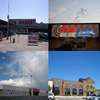
by Julia Christensen
with funds from the Jerome Foundation
For six years, Julia Christensen has been creating a body of work about how communities are reusing abandoned big box buildings — the large, free-standing, warehouse-like buildings made prominent by one-stop-shopping corporations like Wal-Mart and Kmart. Treading the fine line between art and research, she created www.bigboxreuse.com in 2004. Wikireuse both updates this website and invites users to participate in its development. Nodes on a map of the United States catalog big box reuse at geo-coded locations; users can add to the map by sending in information and/or documentation about a reused big box building near them. Articles about big box reuse are also cataloged on the website, so the user can read local accounts in local newspapers from across the country.
Authored by Christensen, Big Box Reuse was released by MIT Press in November.
Read a 1/review >>
Read a 2/review >>
Read an interview >>
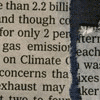
by Joe Moore
with funds from the New York City Department of Cultural Affairs
Cutups is a space that allows users to explore the recombination of existent text on a webpage so that new meanings and uses may be discovered and articulated. Cutups gives writers, poets, artists, and everyone else the ability to realize new possibilities inherent within the material of a given text. While the number of texts available for consumption has grown exponentially with the development of the web, the tools to manipulate and engage creatively with those texts remain quite small. The employment of combinatorial techniques by William Burroughs, Tristan Tzara, and the Oulipo served as the initial inspiration for the development of Cutups. But while Cutups draws upon these artistic and literary traditions, my hope is that the tool is flexible enough to allow for the creation of content not imagined by myself. (Joe Moore)
Cutups was a winner of The ShiftSpace Commissions Program, a 2007 commission of New Radio and Performing Arts, Inc., (aka Ether-Ore) for its Turbulence web site. [Needs Firefox Browser and ShiftSpace Download]

by Caryn Heilman (LiquidBody MediaDance)
with music by Nana Simopoulos
with funds from the Andy Warhol Foundation for the Visual Arts
Additional support provided by Frank and Barbara Peters through the Medici Circle award at the University of California at Irvine
Touching Gravity 2/Tilt is an interactive, aerial videodance superimposed on a composited image of two rivers in the towns of North Adams and Adams, Massachusetts. Part of the Networked Realities: (Re)Connecting the Adamses project, the two New England towns are (re)connected through a colorful, fluid, multilayered dance that incorporates the movement of the natural landscape from each town, seen through the “difference” blend mode of the Flash interface. Users can create and save their own versions of the dance by determining the order and timing of five different clips. Periodically, additional clips will be added so that both the dance and the user experience may evolve. Composer and instrumentalist Nana Simopoulos has contributed five tracks to accompany the five dance clips; each piece is played on a single instrument representing a different continent. Together, they form a single composition that is layered over the sounds of the two rivers, providing the listener with the ability to remix the musical textures. [Needs Flash player and core duo Mac or PC]

A Juried International Competition: Call for Proposals
with funds from the National Endowment for the Arts
A networked book is an open book designed to be written, edited and read in a networked environment (Institute for the Future of the Book). Five writers will be commissioned to develop chapters for a networked book about networked art. The chapters will be open for revision, commentary, and translation by online collaborators. Each commissioned writer will receive $3,000 (US). Committee: Steve Dietz (Northern Lights, MN), Martha CC Gabriel (net artist, Brazil), Geert Lovink (Institute for Network Cultures, The Netherlands), Nick Montfort (Massachusetts Institute for Technology, MA); and Anne Bray (LA Freewaves, LA), Sean Dockray (Telic Arts Exchange, LA), Jo-Anne Green (NRPA, MA), Eduardo Navas (newmediaFIX), Helen Thorington (NRPA, NY).
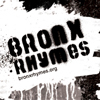
by Claudia Bernett and Maria Ioveva
with funds from the Jerome Foundation
Bronx Rhymes illuminates the history and significance of Hip Hop in the Bronx by tagging important locations for Hip Hop (1520 Sedgwick, for example) with posters. Each poster describes the historical significance of that location in the form of a rhyme, and invites people walking by to join in a rhyming battle by txt-ing their own rhyme from their mobile phone. The website displays the artists and locations along with all the submitted rhymes elevating the most recent submission. Eventually, visitors to the website will be able to rate existing rhymes, and add their own.
Read an article >>
Read a 1/review >>
Read a 2/review >>
Read a 3/review >>
Read a 4/review >>
Read a 5/review >>
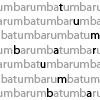
by Ethan Ham and Benjamin Rosenbaum
with funds from the Jerome Foundation
Tumbarumba is a frolic of intrusions — a conceptual artwork in the form of a Firefox extension. Tumbarumba hides stories — twelve new stories by outstanding authors — where you least expect to find them, turning your everyday web browsing into a strange journey. [Needs Firefox Browser and Tumbarumba extension]
Read a 1/review >>
Read a 2/review >>
Read a 3/review >>
Read a 4/review >>
Read a 5/review >>
by Marianne R. Petit
with funds from the Andy Warhol Foundation for the Visual Arts
Recollecting Adams is a 25-part web-based animation series that will conclude in December 2009. A new episode will launch every two weeks. "The people of Adams, Massachusetts are gifted storytellers. We learned that in our first few weeks here. When they enter the gallery, they tell us about how they bought gloves when the storefront was Pociask's Dress Shop, or how they took guitar and accordion lessons when it was La Flemme's Music Store. And this is just inside the building. When we're standing outside, we hear tales of Summer Street and the town. People in Adams really know its history and love sharing it. They weave their personal family stories into a rich history of immigration, the mills, the church and more, across several generations." Marianne Petit
Recollecting Adams is part of Networked Realities: (Re)Connecting the Adamses — a collaboration between Greylock Arts, Turbulence.org and MCLA Gallery 51. It includes four commissioned works housed in the Department of Public Works at www.newadams.es.
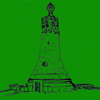
by David Lachman
with funds from the Andy Warhol Foundation for the Visual Arts
Adams and North Adams sit at the base of Mount Greylock, the highest point in Massachusetts. It is their unifying landmark and, according to local Indian legend, a spiritual beacon. A drawing of the landscape is used as the organizing structure for a series of embedded video clips. Seeded with videos by the artist, the domain is now open to everyone (artists, citizens, kids). Submissions should be relatively short and can be video art, documentary, animation, personal stories related to place, family histories, short film, experimental, or anything else. A united portrait of the towns, their people, and their history will be created by many voices contributing to the domain.
Domain of Mount Greylock is part of Networked Realities: (Re)Connecting the Adamses — a collaboration between Greylock Arts, Turbulence.org and MCLA Gallery 51. It includes four commissioned works housed in the Department of Public Works at www.newadams.es.
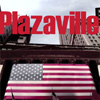
by G.H. Hovagimyan,
with Christina McPhee and Artists Meeting
with funds from the New York City Department of Cultural Affairs
and the New YorkState Council on the Arts, a state agency
Plazaville is a new media video art work set in 21st century New York City. It is based on the classic 1965 movie "Alphaville" by Jean Luc Godard. The scenes from the original "Alphaville" are being re-enacted, interpreted and improvised upon by artists, actors and videographers. The piece uses the Internet as one means of distributing the short video clips. Viewers can download new scenes as they become available. This is somewhat like a serialized program but is not in any order. The videos can be viewed on computers, iPhones and large screen HD televisions (using AppleTV). Plazaville extends the notion of video-performance by using the idea of a movie shoot as vehicle for ephemeral performance art. [Needs Quicktime Plugin]
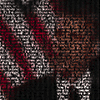
by Michael Takeo Magruder
Pervasive mass-media in the information age offers us a continuous stream of mediated realities. Countless events of varying and often questionable significance emerge as scrolling columns of headline news and then quickly fade into the soon-forgotten annals of our time. Within this saturated datascape of history, there are singular defining moments that rise above the ubiquitous monotony of the everyday. These events shape the consciousness of individuals and nations alike by transcending their epoch, and are indelibly situated within greater historical overviews that inform the perceptions of both present and future generations. In an era of unjust wars and monumental acts of terror, some of these events have eroded our most precious institutions and sustained fear within all strata of society, while others have instilled within us hope and offered us a means to reconcile our past transgressions. Reflection (hope and reconciliation) re-mediates one such moment. Through the distillation of its aesthetic elements – images, words, voice, music – we experience the event with changed, but undiminished intensity. [Needs Internet browser with Flash 9+ plugin and stereo audio. 512+ kb/s connection recommended]
Read a review >>

by the Wa-KOW! Collective
The Wa-KOW! Collective was founded on the idea that the distinctions between artistic media are problematic and productive rather than essential. Their primary goal is to find ways to blur those boundaries. The group--made up of poets, musicians, and photographers--works in and around the borders between text, sound, and image, exploring the relations between the three media and the nature of each type of media. Their artistic process evolved through organic collaboration. They visited specific sites in Tulsa and collected raw materials through writing, audio recording, and photography. The group then altered, edited, and arranged these materials, meanwhile incorporating samples from songs, films, texts and images related to Tulsa. The result of this collaboration is Tulsita, an online flash-based environment that explores the cultural, ethical, and aesthetic experiences they have had living in Tulsa, Oklahoma. [Needs Flash plugin]
by Matthew Belanger, for Greylock Arts
Turbulent Works is a group exhibition of net art commissioned by New Radio and Performing Arts, Inc. for its Turbulence web site. It features a selection of Turbulence commissions which represent the broad spectrum that is net art. In these works you will experience new interfaces for sound expression, art created within virtual worlds, art which is politically and socially motivated, video performances, photographic explorations, and websites re-interpreted through painting.
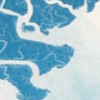
A Feed-Reading of The Capilano Review
by J.R. Carpenter
Curated by Kate Armstrong
What are the creative and poetic possibilities of RSS syndication and how might the introduction of omnipresent, iterative publishing processes affect our experience of digital literature? How can a book be transformed and reworked through an exploration of the formal and aesthetic structure of the stream? In February 2007, Vancouver-based literary quarterly The Capilano Review published an issue dedicated to new writing and new technologies guest-edited by Andrew Klobucar and including essays by Andrew Klobucar, Global Telelanguage Resources, Sandra Seekins, Kate Armstrong, David Jhave Johnston, Laura U. Marks, Sharla Sava, Kevin Magee, Jim Andrews, Gordon Winiemko, Nancy Paterson and Darren Wershler-Henry. Commissioned by The Capilano Review, Tributaries & Text-fed Streams: A Feed-Reading of The Capilano Review is a new artwork in which Montreal-based writer and artist J.R. Carpenter undertakes an experimental rereading of and response to this text.
Upgrade! Boston is a monthly gathering of new media artists and curators that fosters dialogue and creates opportunities for collaboration within the media art community. At each meeting one or two artists/curators present work in progress and participate in a discussion. Upgrade! Boston is hosted by the Studio for Interrelated Media at Massachusetts College of Art and Design and is a node in the Upgrade! International network.
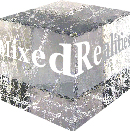
with funds from Emerson College and
the Andy Warhol Foundation for the Visual Arts
Floating Points 5: Mixed Realities was a symposium and workshop at Emerson College and in Second Life. It took place on February 8 and 9, 2008. Participants included: Burak Arikan, Drew Baker, John (Craig) Freeman, Usman Haque, Drew Harry, Scott Kildall, Gene Koo, Pierre Proske, Michael Takeo Magruder, Victoria Scott, and David Steele. Mixed Realities explored the convergence — through cyberspace — of real and synthetic places made possible by computers and networks. The Mixed Realities exhibition connected and overlayed the Huret & Spector Gallery (Boston), Turbulence.org, and Ars Virtua (Second Life) [Second Life is a shared, synthetic, 3-D environment through which people can interact in real-time by means of a virtual self or avatar.] Mixed Realities enabled people distributed across multiple physical and virtual spaces to communicate with one another and share experiences in real time.

An International Networked Art Exhibition
Curated by Jo-Anne Green
with funds from the Andy Warhol Foundation for the Visual Arts
and Emerson College
Mixed Realities explored the convergence — through cyberspace — of real and synthetic places made possible by computers and networks. The Mixed Realities exhibition connected and overlayed the Huret & Spector Gallery (Boston), Turbulence.org, and Ars Virtua (Second Life). Mixed Realities enabled people distributed across multiple physical and virtual spaces to communicate with one another and share experiences in real time. Works/Artists: CATERWAUL by Pierre Proske, with technical assistance from Artem Baguinski and Brigit Lichtenegger; Imaging Beijing by John (Craig) Freeman; NO MATTER by Scott Kildall and Victoria Scott; Remote by Neill Donaldson, Usman Haque, Ai Hasegawa, Georg Tremmel; The Vitruvian World by Michael Takeo Magruder, Drew Baker and David Steele.

with funds from the New York State Music Fund, established by the New York State Attorney General at Rockefeller Philanthropy Advisors; the New York City Department of Cultural Affairs; and Pace Digital Gallery.
Programmable Media II: Networked Music, a one-day symposium examining the current and future possibilities of network-enabled music, was held on April 11, 2008 at Pace University, NYC and in Second Life. The symposium included artist presentations and live performances. Based on the rapidly expanding archive of music / sound experiments to be found on Networked Music Review and the fifteen short works recently commissioned for it, the symposium aimed to stimulate critical and far-ranging discussion on emerging music and sound art practice. With Jason Freeman, Dan Trueman, Peter Traub, Zach Layton, Sawako Kato, Helen Thorington, LoVid, Tobias c. van Veen, Adam Nash, Andrew Beck, and Mark T. Godfrey.
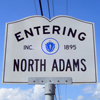
with funds from the Andy Warhol Foundation for the Visual Arts, the LEF Foundation, and the Massachusetts Cultural Council
Turbulence, Greylock Arts, and MCLA Gallery 51 collaborated to present Networked Realities: (Re)Connecting the Adamses, an interactive art and technology project that connected physical spaces in Adams and North Adams Massachusetts via the Internet. Adams and North Adams, once a single settlement in Western Massachusetts with communities in north and south Adams, split in 1878. The project consisted of four commissioned works, two commissioned essays, two workshops, and two public conversations. It took place between June 14, 2008 and March 2, 2009.
